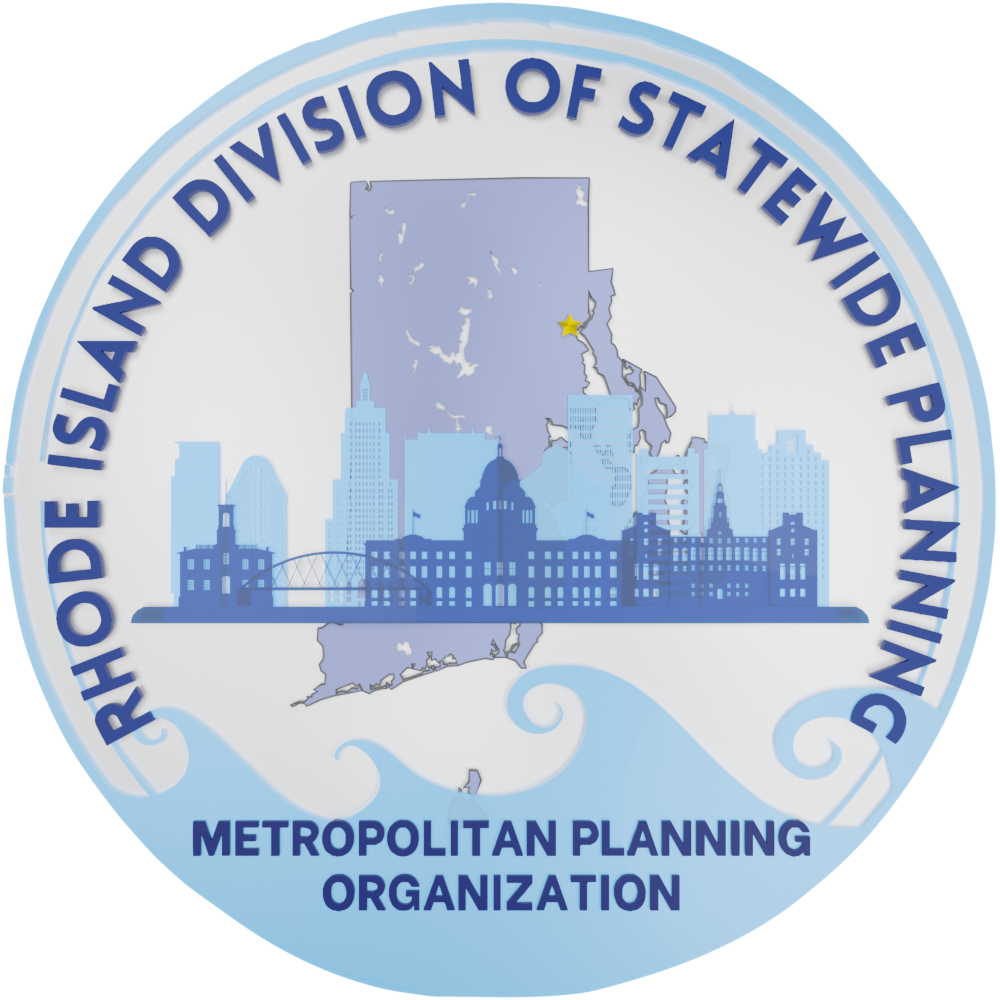Sea Level Rise
In 2014, Executive Order 14-01 was enacted and called for the establishment of the Rhode Island Executive Climate Change Coordinating Council (EC4). The EC4 was created due to the recognition of the “strong evidence and scientific consensus that manmade greenhouse gases are causing an overall rise in global temperatures that is predicted to have profound effects on global climate, weather patterns and ocean conditions…
Upon the formation of the EC4, the Division of Statewide Planning launched efforts to evaluate climate change related events in the state of Rhode Island.
- 2014: The Division completed the Vulnerability of Transportation Assets to Sea Level Rise, a study which takes a statewide view to zero in on transportation infrastructure exposed to multiple sea level rise scenarios.
- 2016: In 2016, the Division completed two additional sea level rise projects. The first, Vulnerability of Municipal Transportation Assets to Sea Level Rise and Storm Surge indicates local infrastructure and transportation assets impacted at various seal level rise scenarios, and also factors in storm surge.
- 2016: The second project completed in 2016 was the Socioeconomics of Sea Level Rise project. While much of the work and analyses previously performed on sea level rise focuses on infrastructure, the Socioeconomics of Sea Level Rise project is unique as people are the forefront of the analysis. The project aims to identify the number and demographic and socioeconomic makeup of the people located within multiple sea level rise inundation scenarios.
The Division continuously aims to address current and long-term challenges in an effort to assist Rhode Island communities. Sea level rise is a challenge that is culminating, relevant, and a topic which the Division would like to work on as a partner with communities.
The first sea level rise project completed by the Division of Statewide Planning was “Technical Paper 164: Vulnerability of Transportation Assets to Sea Level Rise,” which was completed in 2014. Utilizing cutting-edge data from the National Oceanic and Atmospheric Administration, combined with analysis techniques developed at URI and in-house, staff members from the Division of Statewide Planning examined where the state’s transportation infrastructure might be exposed to sea level rise, and devised a technique for assessing the vulnerability of those assets. Using a GIS-based methodology, the study analyzes the transportation assets potentially exposed under 1, 3, and 5 feet of sea level rise. Technical Paper 164 remains a useful resource in providing an overall understanding of key transportation system exposures, a key data point for state agencies.
Following up on the successes of Technical Paper 164, “Technical Paper 167: Vulnerability of Municipal Transportation Assets to Sea Level Rise and Storm Surge” was completed in 2016. This project adapted the methods of Technical Paper 164 to incorporate new data, a municipal level outlook, and a more easy to understand presentation. This project utilized the excellent STORMTOOLS data set created by the Coastal Resources Management Council, which offered the opportunity to bring information about storm surge and an additional sea level rise scenario into the analysis. The final project utilized a very similar methodology to that used in Technical Paper 164, using GIS to analyze 1, 3, 5, and 7 foot sea level rise and storm surge scenarios. In contrast to the previous project, Technical Paper 167 offers a more user focused final product. A broad summary of the results are presented in factsheets tailored to each municipality threatened by sea level rise and storm surge. These fact sheets are intended to help communicate quickly the basics of sea level rise and storm surge vulnerability, a useful tool for those new to the topic or for fostering conversation. For those who want to dig deeper, there is the traditional technical paper, as well as an online Digital Appendix that will allow municipal officials to quickly drill down to the data relevant to their work.
Simultaneously to the municipal transportation vulnerability assessment, Division of Statewide Planning Staff began a second sea level rise analysis project to apply the now familiar methodology to areas other than transportation. The Socioeconomics of Sea Level Rise project uses the best available data in an effort to identify the social, economic and demographic makeup of the populations located within the 1, 3, 5 and 7 foot sea level rise inundation zones in the state’s 21 coastal communities. In addition, the project highlights and identifies the Title VI and Environmental Justice (EJ) populations protected under the Title VI of the Civil Rights Act of 1964, and Executive Order 12898, Federal Actions to Address Environmental Justice in Minority Populations and Low Income Populations, respectively.
As the science and tools of climate change are undergoing rapid upgrades, no analysis undertaken at the current time can be considered definitive. While there are ongoing efforts to study riverine flooding, precipitation, and erosion, none of these efforts were felt to be mature enough for inclusion in the above studies. More broadly, current conditions are not always a perfect guide to future events.
Nonetheless, it is clear that the current circumstances in Rhode Island can be viewed with optimistic caution. Though sea level rise and storm surge are likely to present clear difficulties in many areas, it should be recognized that the threats being faced are not entirely new: previous generations also faced inundation from major storm events, and as a result many key assets in Rhode Island are either well protected, or have not survived the state’s 380 year history. Most major transportation systems are located well away from flood zones, and some population centers have built up systems of flood defense. As a result the vulnerabilities described in these projects are not of an existential nature.
Still it is clear that climate change and sea level rise represent a new type of challenge. While major infrastructure and major population areas may have some residual protection, minor facilities and dispersed settlement along the coast are at major risk of exposure, which could have major economic and social ramifications for those affected, their communities, and the state as a whole. Given the long term nature of planning, the 100 year time frame of these exposures is not academic. Decisions being made in the short term are likely to be exposed to long term exposures, something policy makers should take into account as they move forward.
Rhode Island Sea Level Rise Links
Many state agencies in Rhode Island are working to analyze the impacts of climate change and sea level rise in ways that more directly affect their agency’s area of focus. Those seeking to learn more about Sea Level Rise in Rhode Island may wish to consult these valuable resources:
- Rhode Island Coastal Resources Management Council
- Rhode Island Department of Health
- Rhode Island Emergency Management Agency
- Rhode Island Department of Environmental Management

